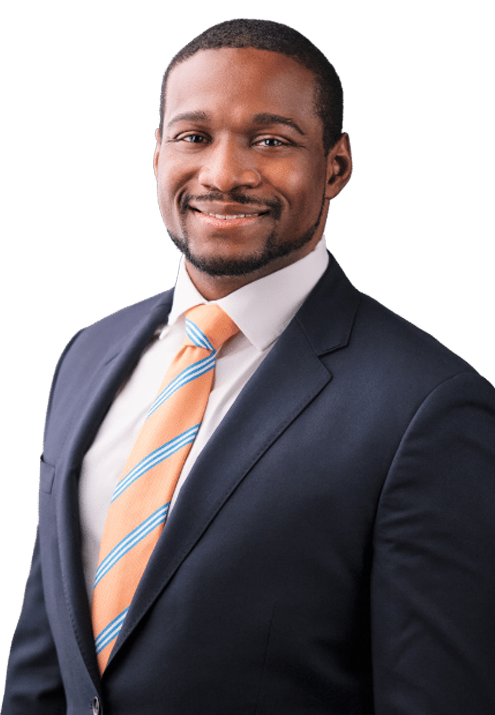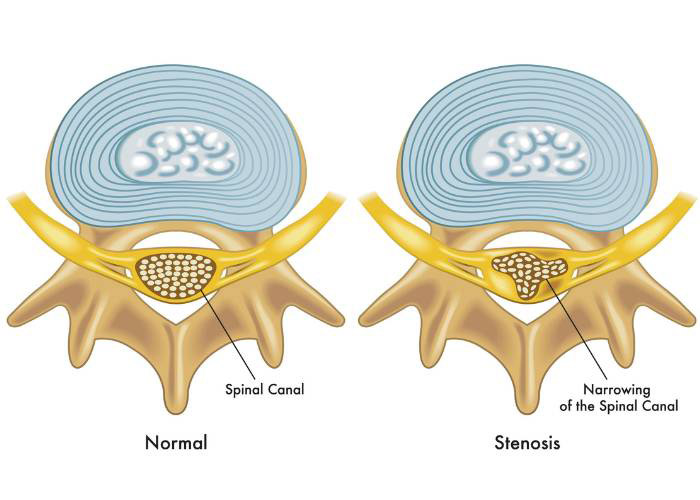Spinal Stenosis Specialist

If you have pain in the neck or lower back along with a heaving feeling in the arms or legs that leads to cramping, you may have spinal stenosis. Spinal stenosis is a condition that occurs most often in older individuals and is caused by a narrowing of the spinal canal. Spinal stenosis specialist Doctor Brenton Pennicooke, provides diagnosis as well as surgical and nonsurgical treatment options for patients in St. Louis, St, Peters, Creve Coeur and surrounding cities in St. Louis county and St. Charles county, Missouri who are experiencing symptoms associated with spinal stenosis. Contact Dr. Pennicooke’s team today!
What is spinal stenosis?
Spinal stenosis occurs when there is not enough space in the spinal canal, causing pressure on the spinal cord and nerves traveling through the spine. This condition is often age-related and due to general wear and tear on the bones of the spine. Most often seen in the cervical (neck) and lumbar (lower back) regions of the spine, spinal stenosis can be asymptomatic years before symptoms progressively get worse and start to cause issues. Spinal stenosis specialists, Dr. Brenton Pennicooke, MD, treats patients in St. Louis, St, Peters, Creve Coeur and surrounding cities in St. Louis county and St. Charles county, Missouri, who are experiencing symptoms associated with spinal stenosis.

Who is likely to have spinal stenosis?
Spinal stenosis most commonly affects older adults over 50 but can also be seen in younger people who have been born with a narrow spinal canal. Spinal injury can also cause the narrowing of the spinal canal as well as scoliosis, early osteoarthritis, or other genetic anomalies.
What causes spinal stenosis?
Spinal stenosis physically changes the structure of the spine, causing narrowing of the space around the spinal cord and/or nerve roots that exit the spinal canal. This progressive and potentially painful condition can be caused by a number of things including:
- Bulging or herniated discs
- Osteoarthritis: A bone-on-bone degenerative condition that breaks down the cartilage in the joints, including the spine.
- Bone spurs
- Spinal fractures or injuries
- Spinal cord tumors or cysts
- Thickened ligaments: Ligaments that hold the spine together can thicken overtime and bulge into the spinal canal.
- Congenital spinal stenosis: Narrow spinal canal from birth
- Spinal deformity: Atypical twisting and curving of the spinal column
What are the symptoms of spinal stenosis?
Spine changes may be seen in x-rays along with the narrowing of the spinal canal long before actual symptoms occur. The symptoms will vary, depending on where the stenosis is present. In general, patients with spinal stenosis may experience the following symptoms:
- Pain: Most often in the neck and lower back
- Burning pain or ache that radiates down the buttocks or legs, and worsens when walking or standing. (Lumbar spinal stenosis)
- Numbness or tingling that radiates down the arms and hands. (Cervical spinal stenosis)
- Weakness in the extremities
- Heavy feeling in the arms or legs that can lead to cramping
- Problems with walking or balance
- Problems with bladder or bowel issues (incontinence)
How is spinal stenosis diagnosed?
Dr. Pennicooke will obtain a thorough medical history and inquire about recent and long-term symptoms. A physical examination can show him the areas of concern, along with patient balance, areas of pain and problems with bending or walking. Diagnostic imaging can include x-rays, MRI and/or a CT scan. However, typically is best identified by a MRI or a CT myelogram.
How is spinal stenosis treated?
The treatments for spinal stenosis will vary greatly from patient to patient and depends on the severity of symptoms, location of pain, patients age and other important factors. Dr. Pennicooke often prefers a conservative approach before surgical treatment.
Non-surgical:
Symptoms of spinal stenosis may be helped or alleviated with the following:
- Hot and cold therapies to ease symptoms
- NSAIDs: non-steroidal anti-inflammatory drugs
- Physical therapy
- Steroid or corticosteroid injections
- Needle procedure for thickened ligaments: A non-surgical procedure performed with a needle, typically done by non-surgeons.
Surgical:
Surgical treatment is usually explored once non-surgical treatments have failed to alleviate pain and restore proper function. There are different surgical treatments that may be used to reduce the pressure on the nerve roots and spinal cord and may include:
- Laminectomy: Most commonly used for this condition, a laminectomy removes a small portion of the vertebrae called the lamina, allowing more room for the spinal cord and nerve roots.
- Laminotomy: Removes a small part of the lamina by creating a small hole in the lamina to relieve pressure.
- Laminoplasty: For the cervical spine, creates a hinge on the lamina which opens up the space. The resulting gap is bridged by metal hardware.
- Foraminotomy: Removal of bone in the area where the nerve root exits to provide more space.
- Posterior Instrumentation: Reserved for lumbar stenosis, a minimally invasive procedure that adds spacers between the bones to keep the vertebrae apart, allowing more space for the nerves.
- Spinal fusion: Permanently joins one or more bones together to stop bone friction and pain.